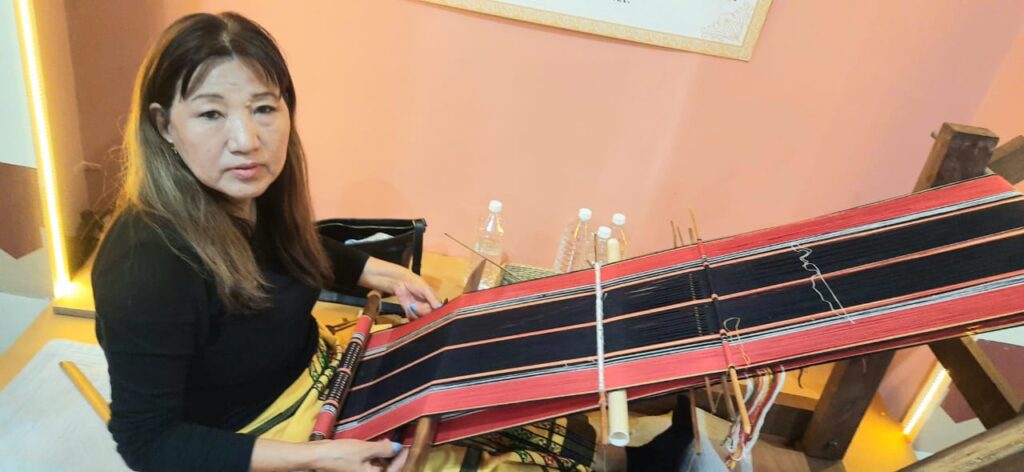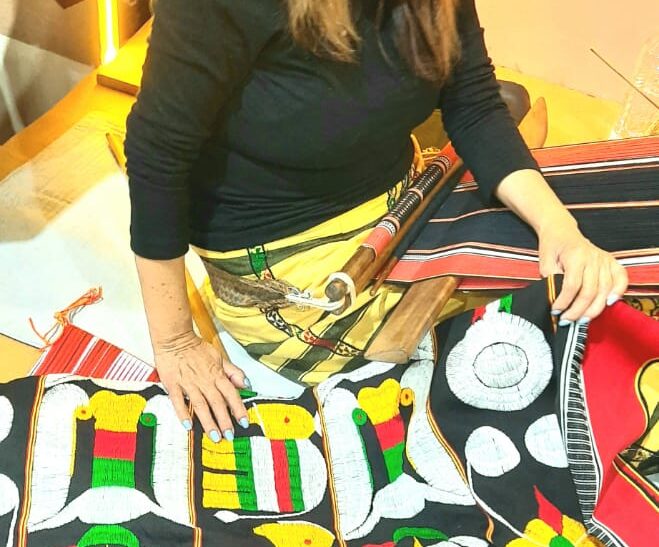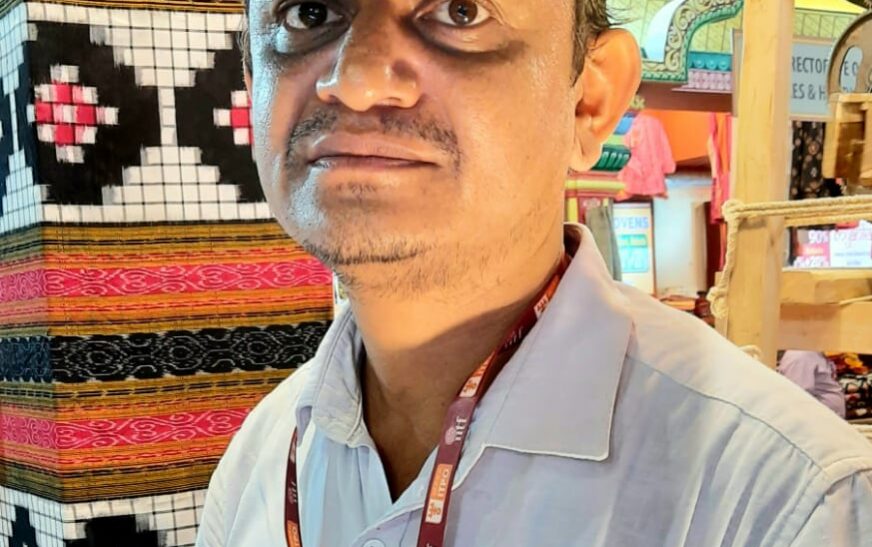R. Pamringla Vashum, a micro-entrepreneur hailing from the Tangkhul Naga tribe in Manipur, takes pride in being the proprietor of GI 211 for Shaphee Lanphee. This unique shawl is crafted through needlework without a frame, using the traditional loin loom fabric woven by Manipur women. A Geographical Indication (GI) tag, typically associated with products from rural, marginal, and indigenous communities, signifies recognition at both the national and international levels due to distinctive qualities. As of 14th December 2022, the total number of GI Tags in India was 432.
In an insightful conversation with The Interview World at the India International Trade Fair, Pamringla delves into the intricacies of weaving Shaphee Lanphee, its significance on special occasions, and the intergenerational transmission of this skill. Below are excerpts from the interview:
Q: Can you elaborate on your product?
A: Shaphee Lanphee, also known as a loin loom or stencil loom, is a traditional fabric woven and worn by the Naga people. This garment is not purchased externally; every woman is expected to possess the skill of weaving it. While utilized by all family members, the weaving process is exclusively performed by women. Proficiency in this skill is considered essential for marriage. Weaving Shaphee Lanphee is a traditional and labor-intensive art, requiring at least ten days for a single piece. The process places significant strain on the shoulders and lower belly. Despite the labor intensity, we do not generate profits; these products are used exclusively for personal wear, adhering to tradition and culture. Shaphee Lanphee features a black background and a red-bordered fabric adorned with stylized motifs, manually embroidered with cotton threads.
Q: When was the GI tag awarded for Shaphee Lanphee?
A: The GI tag, denoted as Shaphee Lanphee GI 211, was obtained in 2014. I am proud to work on this product and continue our traditional weaving skills in a dignified manner.
Q: Do you undergo any specific training for weaving Shaphee Lanphee?
A: No special training is required, as the skill is passed down through generations in a traditional manner. While outsiders may need training, local women in Manipur are adept at the craft without formal instruction.
Q: On which occasions is Shaphee Lanphee worn?
A: In the Tangkhul community, affluent individuals don this garment when hosting feasts. Additionally, it is a tradition for women to wear Shaphee Lanphee during marriage ceremonies, presenting these products to the groom’s family.
Q: Do you export these products?
A: Exporting Shaphee Lanphee is challenging due to the traditional, non-mass-produced methods employed by women using raw materials. Bulk production, a prerequisite for exports, is unattainable given the manual labor invested in each piece. We align with Prime Minister Narendra Modi‘s “Vocal for Local” initiative, taking pride in crafting these products for personal use rather than commercial purposes.











2 Comments
Thanks for sharing. I read many of your blog posts, cool, your blog is very good.
A powerful share, I just given this onto a colleague who was doing somewhat evaluation on this. And he in actual fact purchased me breakfast because I found it for him.. smile. So let me reword that: Thnx for the treat! However yeah Thnkx for spending the time to discuss this, I feel strongly about it and love reading extra on this topic. If attainable, as you become expertise, would you thoughts updating your weblog with extra particulars? It is extremely helpful for me. Massive thumb up for this weblog put up!